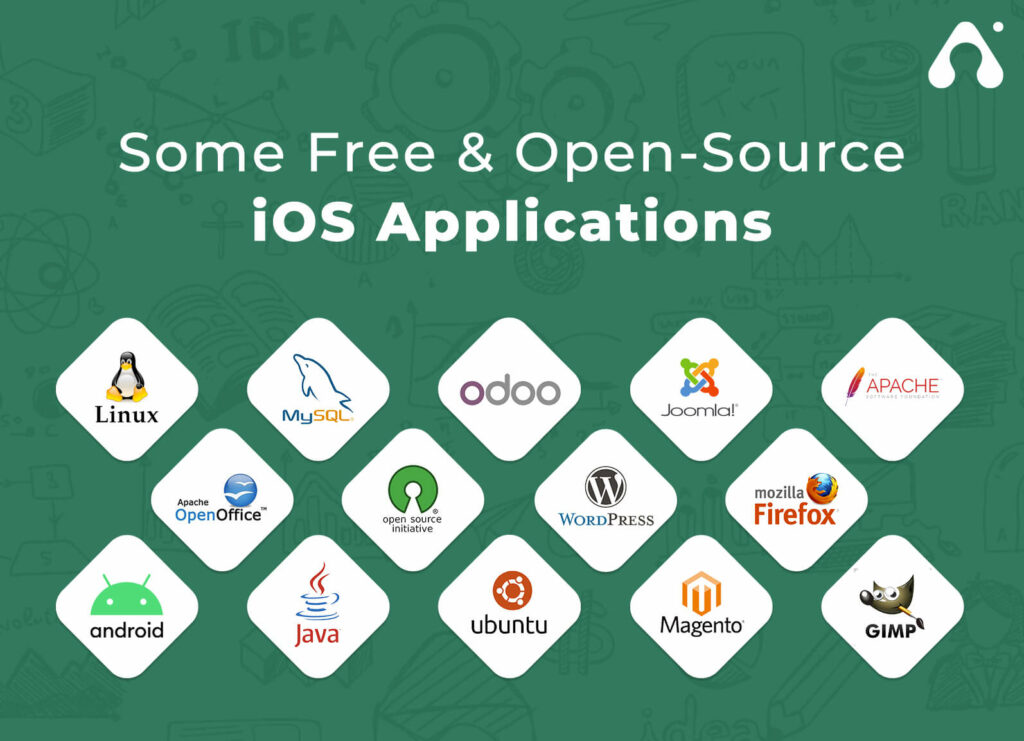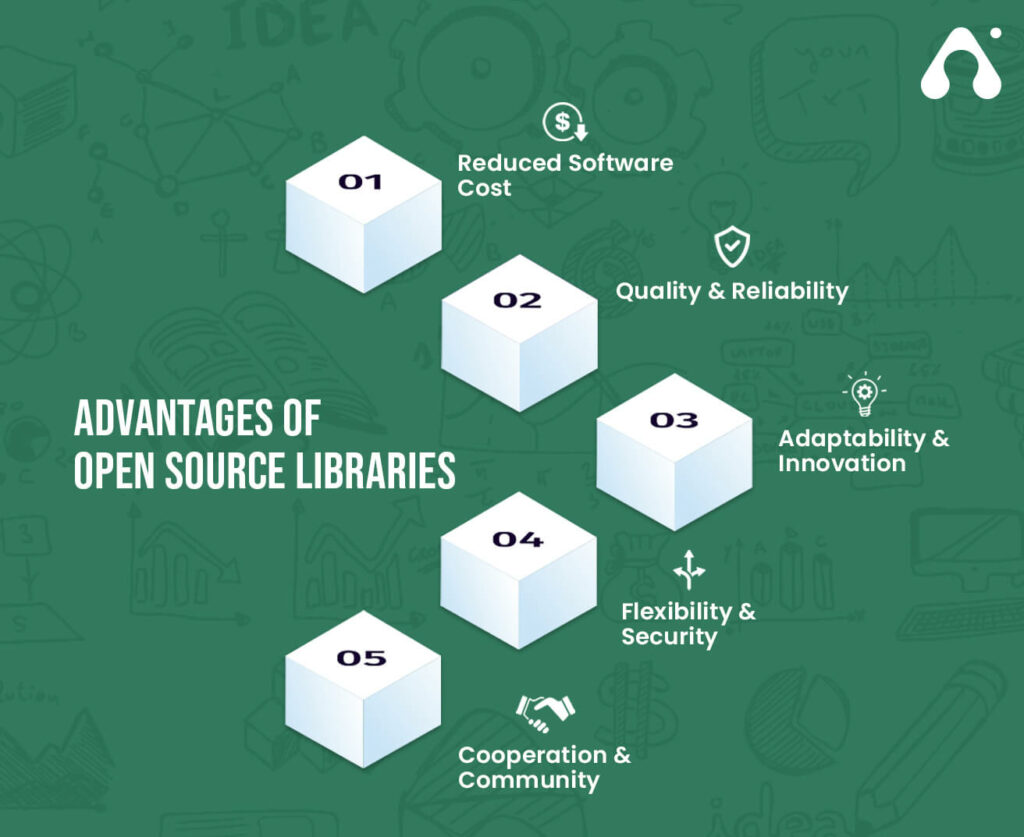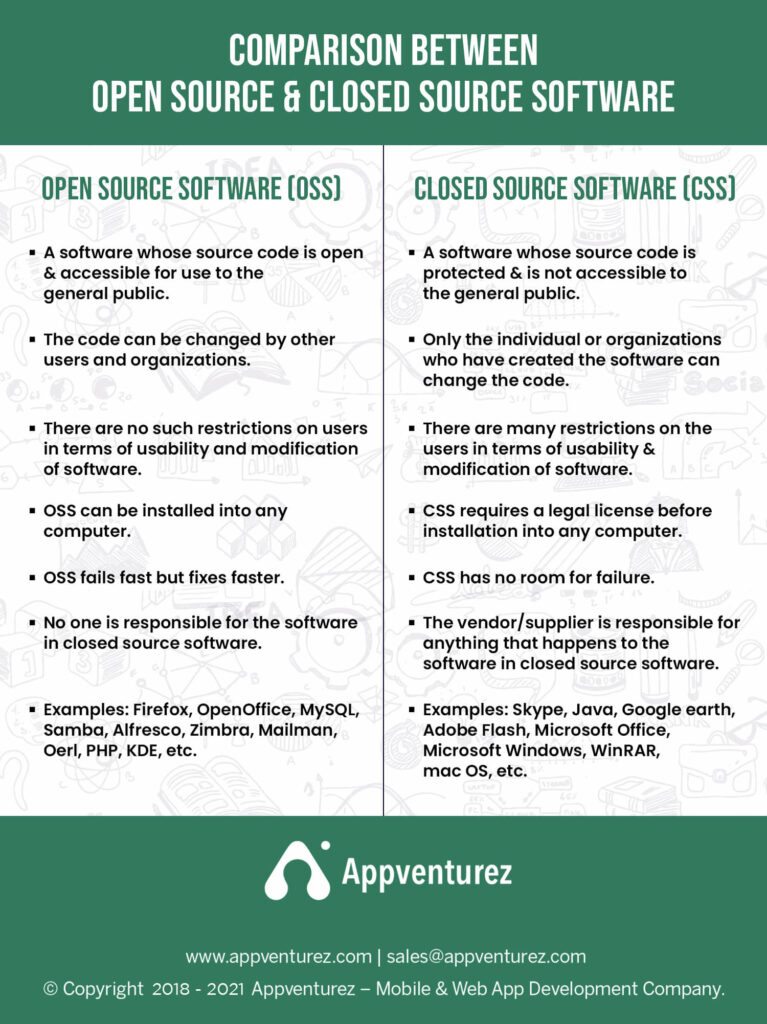We have gathered the list of open source iOS libraries for mobile apps that will help you speed up the mobile app development process in 2021. Touch, swipe and tap! The widespread adoption of smartphones has elevated the field of mobile application development to new heights. As technology advances and smartphones evolve beyond mere communication […]
Updated 5 March 2024

Manager – Technology at Appventurez
We have gathered the list of open source iOS libraries for mobile apps that will help you speed up the mobile app development process in 2021.
Touch, swipe and tap!
The widespread adoption of smartphones has elevated the field of mobile application development to new heights. As technology advances and smartphones evolve beyond mere communication devices, encompassing functions like chatting, email correspondence, international communication, media sharing, food ordering, and online shopping, developers strive to create exceptional apps with relevant features, enhancing the overall quality of life for users.
In the realm of app development, iOS poses a formidable challenge. Thankfully, developers today have the advantage of third-party libraries that serve as invaluable resources, saving considerable time and effort. By seamlessly integrating these open-source iOS libraries, facilitated through tools like Carthage and CocoaPods, developers can expedite the app development process.
Amidst this landscape, the demand for iOS application development services continues to rise, reflecting the ongoing commitment of developers to deliver cutting-edge and efficient solutions. Before taking flight into the world of iOS app development, it’s crucial to solidify your understanding of the fundamentals.
Past few years, the utilization of open source software has almost doubled and is offering great possibilities for both businesses and app developers.
Simply put, any library that has an open source license is known as an open source library. A person is free to reuse, alter and publish the code without any permission. All it requires is the open source license declaration for every file you are using or will be using from this library.
Most of the open source library software uses GNU General Public License and is available with a web interface.
Open source iOS libraries for mobile apps can be rewarding and can make your life drastically simpler when developing your iOS apps.

Why build something from scratch when you can use the available open source libraries to build your app way faster than you could have otherwise, right?
Over the past few years, open source code has become the driving force for transformations. Owing to its quality, reliability, compatibility, efficiency, teamwork and new advancements – most of the organizations have moved towards open source. Let’s discuss the advantages in brief.

Since open source solutions don’t require any licensing fees, it offers a lower total cost of ownership in comparison to traditional library systems. No cost is associated with open source. The only expenditure that would be made will be either for media, documentation or support.
Libraries can benefit from reduced costs, the cloud offers by minimizing local support and hosting costs (in case it is supported and hosted by a third party).
The ease of technicality is the primary reason why app developers and companies prefer open source libraries. As per the word of mouth and research, open source code enhances functionality with attractive designs and pushes excellence in coding.
Open source software or libraries are built by thousands of skilled web and app developers where all users have access to the source code and debugging tools. Anyone can explore, fix errors, offer possible modification and expand the functional set.
Innovation is the other name of open source libraries. There is no need to wait for the next update or release, instead you can develop and launch the features required. Anyone interested has the liberty to add new functions or features to their software development projects.
An open source library lets you adapt code according to your specific requirements easily. The ability of the customization and adjustment makes the open source library and software a preferred choice for all.
Another reason to use open source software is its flexibility. The codes available are not linked to a specific developer and offer a wide range of capabilities.
Open source software license gives the users freedom to choose functions as per their specific requirements by just changing the source code.
Furthermore, the peer review process guarantees security and liability.
Since it’s like an open podium where no one judges you and suggestions are welcome, open source libraries encourage communication, cooperation and collaboration between the experts keen on technologies. This paves the way to more valuable projects.
Most used iOS open source libraries are backed by online forums and support groups where the like-minded professionals share expertise and learn from each other.
Furthermore, the companies benefit as they receive increased attention to their softwares. They also keep working and put efforts to make their products better, reliable and in sync with the trends.
Most used iOS libraries are developer friendly because these are compatible with any situation, structure and provides a cost-effective solution. In the end, it all comes down to how you lace these libraries together to develop the end product.
To convince you more about why you should go for open source iOS libraries for mobile apps, we bring down the difference between open source and closed source software.
The question whether to use open source or commercial source solution has always been the subject of discussion during the evaluation of tech stack.
In this section, we are going to take a look at some of the key factors you should take into account before making a final call.
One of the major differences between the two types is Costing. Open source library means free of cost library. Though it doesn’t have a cost associated with the core functionality, it might include cost for extras like add-ons, assistance or added functionality.
On the other hand, a closed source software is a paid software. The costs differ in terms of the software complexity. The more the price, the better support, functionality and efficiency you get.
If you have the in-house technical expertise and resources to maintain the software for the long-term, then open source may be the most cost-effective solution.
The inventors of the Closed source software take care of the development and bug fixes i.e. it is upto them whether or not they continue their ongoing development.
On the other hand, there is a whole community that takes care of open source development. For this reason, development and bug fixes continue as long as the community is active. As long as the community is active, you can expect new updates and features for a long run.
Since the codes in open source software are not reviewed by the usability experts and are written for developers rather than layperson users, it lacks in terms of usability. Moreover, the manuals and user guides available fail to comply with the standards and are filled with jargon that is usually hard to follow.
When it comes to closed source software, documentation is detailed, brief and well-written. For closed or proprietary software, usability is its USP. The usability is tested by the experts and user manuals are also available for reference & quick training. Also, third party systems and developers are free to use an array of mechanisms to enhance ‘closed’ source software.
The next comparison between open source and closed source software comes down to Security. As the name implies, an open source software is accessible to everyone and so is vulnerable when it comes to security because it is not usually developed in a controlled environment. The code here can be viewed, shared and changed by the community. This means anyone can embed, upgrade or test the broken code. However, this makes it easy for it to be used in the wrong way if intended to.
On the contrary, a closed source software is considered as more secure since it can be fixed only by a supplier. In case anything goes wrong with the software, there is a dedicated support team that solves the issue as soon as the request is received. The only catch here is that solving the problem in closed source software takes longer than compared to open source software.
Rest, for the easy side by side comparison, check out the section below:

The choice between the two depends largely on your business and its goals. The benefits of using open source most used iOS libraries outweigh CSS. We, at Appventurez, are always happy to help you choose the best mobile app development framework or software. Contact us for more information.
For the iOS peeps, on the hunt of good iOS libraries for mobile apps, the next section is for you.
Whether you’ve been in the iOS app development field forever or have just started to learn the ropes – the right set of iOS development tools can take your app to the next level.
In the spirit of being able to contribute to your project quickly, here we’ve rounded up some of our favourite and most widely used open source iOS libraries for mobile apps. You can use them when designing your next iOS app.
This is one of the most widely used and popular iOS libraries for mobile apps that has an amazing community of iOS developers contributing to AFNetworking daily.
It is an open source Objective-C networking third party library for iOS, tvOS and macOS. From basic to advanced features such as SSL Pinning and Network Reachability – AFNetworking offers it all. Thanks to its undisputed popularity (~50 million downloads), you get the advantage of great design along with the extended testing. The additional plugins and the available extended documentation makes working with it a pleasant experience.
Alamofire is the younger and trendy brother of AFNetworking which is written in Swift iOS. It can be considered as an alternative to AFNetworking. This swift-based HTTP networking library for iOS and Mac OS X provides an interface to HTTP network requests. URLSession and URLSessionTask subclasses are at the core of the system.
Alamofire wraps these APIs, among others, in a simple interface offering a bunch of features needed for modern app development using HTTP networking. Updating, downloading, getting JSONs, etc. – Count on Alamofire!
RxSwift is a Swift version of Rx for Functional Reactive Programming. This one of the most used iOS libraries for developers is expressed through observable element interface. It enables easy composition of asynchronous operations and data streams just like the original Rx way.
Originally developed by Vicc Alexander, Chameleon is a lightweight, powerful and color framework for iOS (Objective-C and Swift). It’s sole purpose is to make the software applications perform seamlessly while maintaining their beautiful, modern interfaces.
If you have a design in mind and don’t want to wrap your head around RGB values, with Chameleon, you can save your precious time that is often wasted figuring and adjusting the right colour combination.
If you yearn for a beautiful application quickly, add Chameleon to build your open source ios apps.
Next on our list of open source iOS apps’ libraries is Kingfisher. It is the most powerful used iOS library for downloading and caching images from the web that are written in Swift.
This iOS library for mobile apps includes extensions for UIImageView, NSImageView, NSButton and UIButton – this makes it more useful and beautiful. This lightweight library offers some additional options such as displaying system indicator, placeholder images while downloading, extensible image formatting and built in updating transitions. In case you are working with remote images, go for it!
Using SwiftyJSON as the iOS libraries for developers makes it easy to cope with JSON data in Swift iOS. It is one of the most popular iOS Swift libraries. SwiftyJSON makes testing JSON with Swift easy which is otherwise difficult due to type casting issues.
Merging a JSON into another JSON sums up all the non-existing values to the original JSON that are only available in the other JSON. By adapting SwiftyJSON, the chances of old error types (which might be affecting the efficiency) rule out.
ReactiveCocoa is an Objective-C framework that is inspired by reactive functional programming and aims to provide more precise and flow-based code. ReactiveCocoa is known as FRP (Functional Reactive Programming) because it combines some of the programming styles.
Reactive functional programming ensures that changes done in one part of your app are reflected to the entire app automatically. ReactiveCocoa features some built-in functions that let you transform the signal.
Though using ReactiveCocoa is not an easy task, it’s rewarding.
Realm is a mobile database, cross platform app development alternative to Core Data & SQLite, that operates directly on phones, tablets and wearables. To explore database files, you get a data browser which is easier and faster to work with.
It is among the most used iOS libraries for developers that even supports relationships, generic and vectorization. This popular open source iOS library even launched a platform to sync data between apps in real-time. All things considered, Realm is simple, mobile-first and fast.
Lottie is quite a timesaver! Let’s face it – Animations actually improve user experience by attracting the audience and promoting the brand in an interactive & intuitive way. Lottie does something really amazing. Given the fact that building animations using UIView or CoreGraphics is quite a pain for the developers, Lottie comes loaded with a toolbox to incorporate beautiful designer’s creations in an app.
This brainchild of Airbnb loads and renders animations & vectors in the bodymovin JSON format. Lottie makes it easy to parse Adobe After Effects. This way you get to build your app a lot better and fun.
The last one of our list of most used iOS libraries is SDWebImage. This lightweight and fast open source library offers an asynchronous image downloader with cache support that includes useful UIKit categories for tasks like setting a UIImageView image to a URL.
Though networking has become quite easy in Cocoa, the simple task of setting an image view to an image using a URL hasn’t got any easier. Since SDWebImage eases the process to quite some extent, it is a popular iOS library for developers.
Some of its features include animated GIF support and background image decompression, supports WebP format (including animated WebP), UIImageView category that adds web image & cache management to Cocoa Touch framework and asynchronous image downloader, memory and disk image caching with automatic cache expiration handling.
So, these are our top 10 most-loved and most used iOS libraries that your colleagues and friends are experimenting with around. Our team at Appventurez consider these open source iOS libraries since they make scaling iOS apps relatively simple.
Think we missed a special library? Or wish to discuss your experiences with these libraries? Leave a reply!
Now that you are familiar with the most popular iOS libraries for developers, here are a few things you should keep in mind before using the one:
Doing iOS app development is not something you can achieve in a day. It takes the right amount of time, patience, hard work and iOS libraries for developing mobile apps.
Follow this blog, dive into the nitty-gritty of the most used iOS libraries and gift your business the best mobile application to get the most exposure possible. We believe these open source iOS libraries for mobile apps will simplify your development process and set you well on your way to success.
In case you are having trouble deciding the best iOS libraries, the experts at Appventurez would be more than happy to provide an honest consultation and if required, even the right skill sets. Contact us at +91-9899 650980 or drop us an email at sales@appventurez.com.


Elevate your journey and empower your choices with our insightful guidance.

Manager – Technology at Appventurez
Suryansh Rawat is a Technology Manager at Appventurez who comes with a strong background in software development, technology leadership, and project management. With 5+ years of experience, he possesses expertise in seamless project execution and achieving outstanding results.
You’re just one step away from turning your idea into a global product.
Everything begins with a simple conversation.